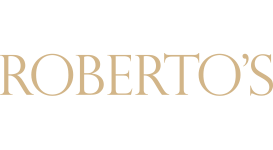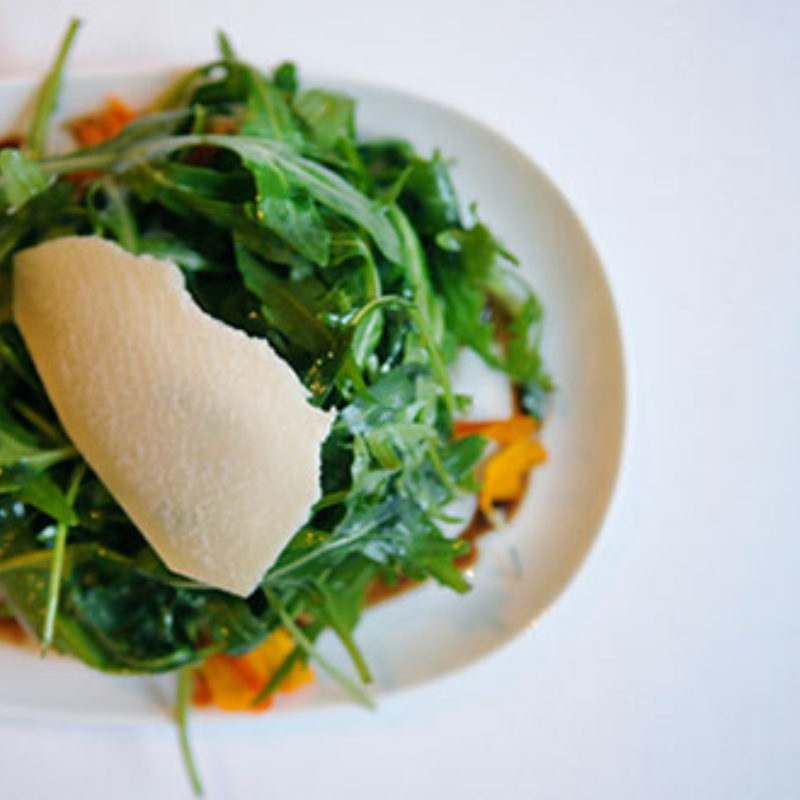Operational Overview
Food & Service
Food & Service
Food & Service
Operational Overview
Food and service together determine the dining experience, with service playing a particular role. There is a saying: “good service may compensate for mediocre food, but mediocre service can not be compensated by good food”. This service mantra is a staple at Roberto’s and a reminder to our staff to be friendly and respectful to each and every guest. The main aspects of good service delivery are:
KNOWLEDGE—INFORMED
SKILLS—FAST
ATTITUDE—FRIENDLY & FLEXIBLE
PERSONALITY—FLAIR
Knowledge of the concept, the menu and its products, as well as the skills to put this knowledge to work, are the basis of a confident performance in the dining room. But guests look for more than efficiency of the service staff; they need recognition and appreciation for their patronage. By demonstrating the right attitude, guests will get this feeling, where no request is too much. Personality is an important aspect of good service. When service expertise is completely developed and nearly becomes a routine, much focus can go out to getting the maximum out of the last level and thereby turning good service into great service.
Job Descriptions
Operations
Operations
Operations
Job Descriptions
A lunch or dinner shift consist of the following team members.
1 hostess
2 supervisors
2 waiters, each responsible for one of the stations
2 assistant waiters, one for each station
1 food runner
1 bartender preparing drinks and providing service of
bar area
Roberto’s should be divided into 2 stations with each one waiter in charge, taking the orders. The supervisors help out with the ordering when needed. Two assistant waiters are serving bread, drinks and clear the tables. One runner transports the food to the dining room on large oval trays that are put on tray stands inside the restaurant. The manning guide can be adjusted to local circumstances and customer expectations. As is customary in many Italian dining places, the mise en place of linen, glasses, menu, etc. is part of the design.
Recipe Cards
Operations
Operations
Recipe Cards
-
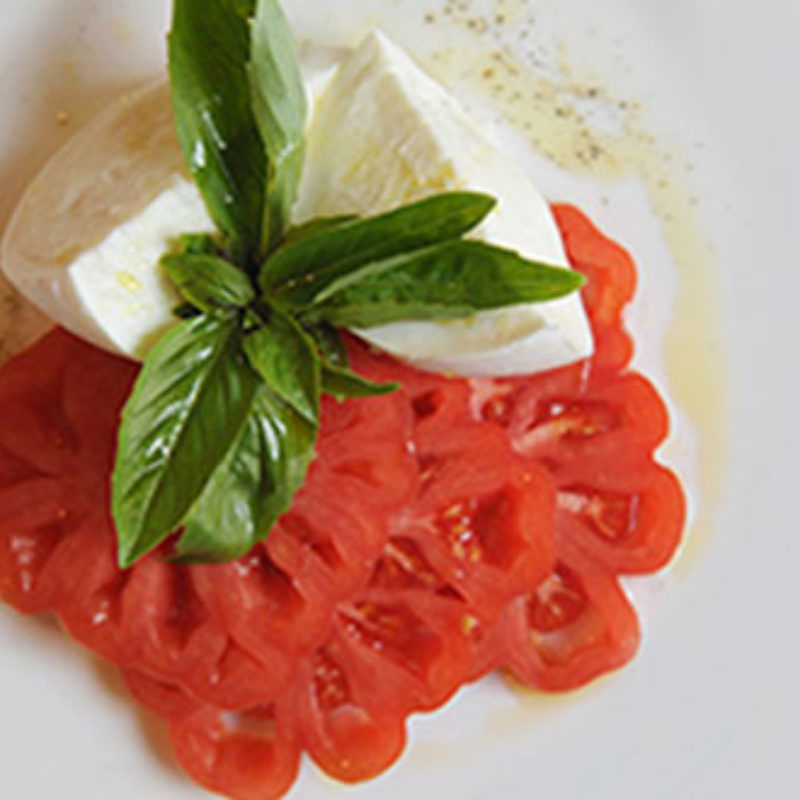

Antipasti
Antipasti
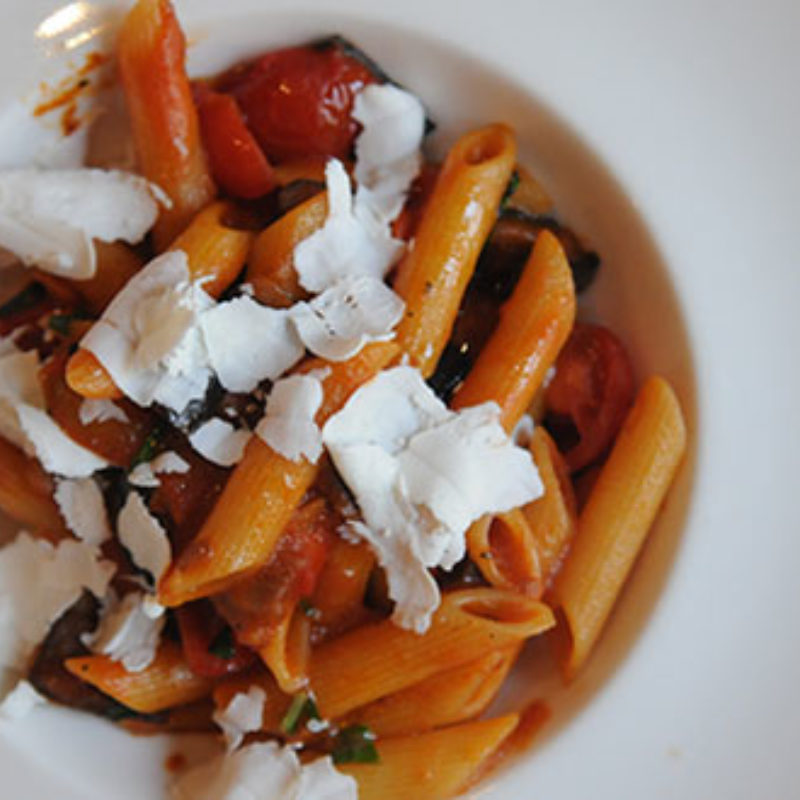

Primi
Primi
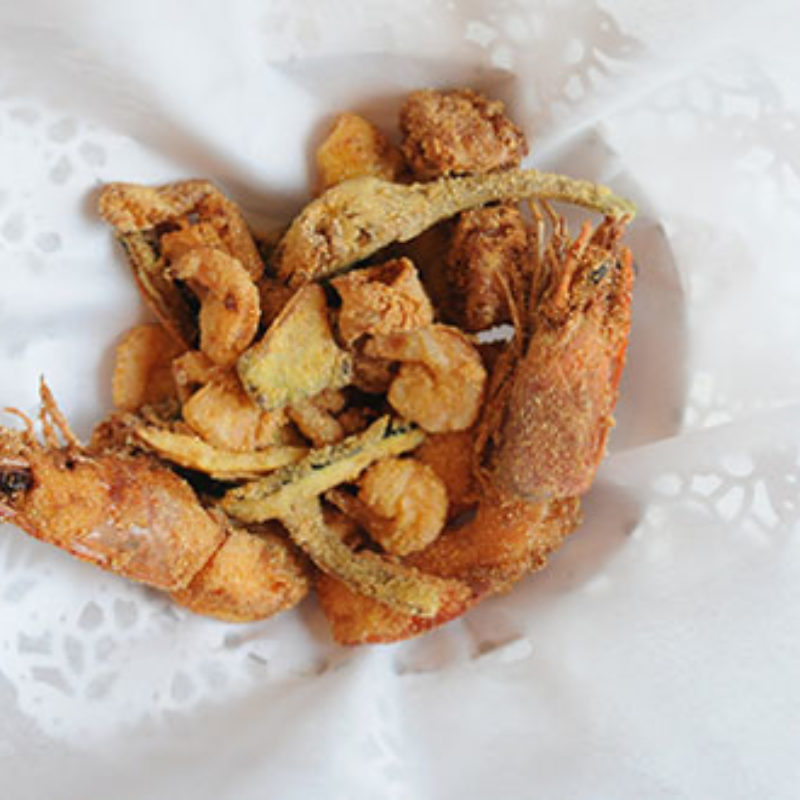

Pesce + Carne
Graphic Identity
Operations
Operations
Graphic Identity
-


Identity Strategy
Identity Strategy
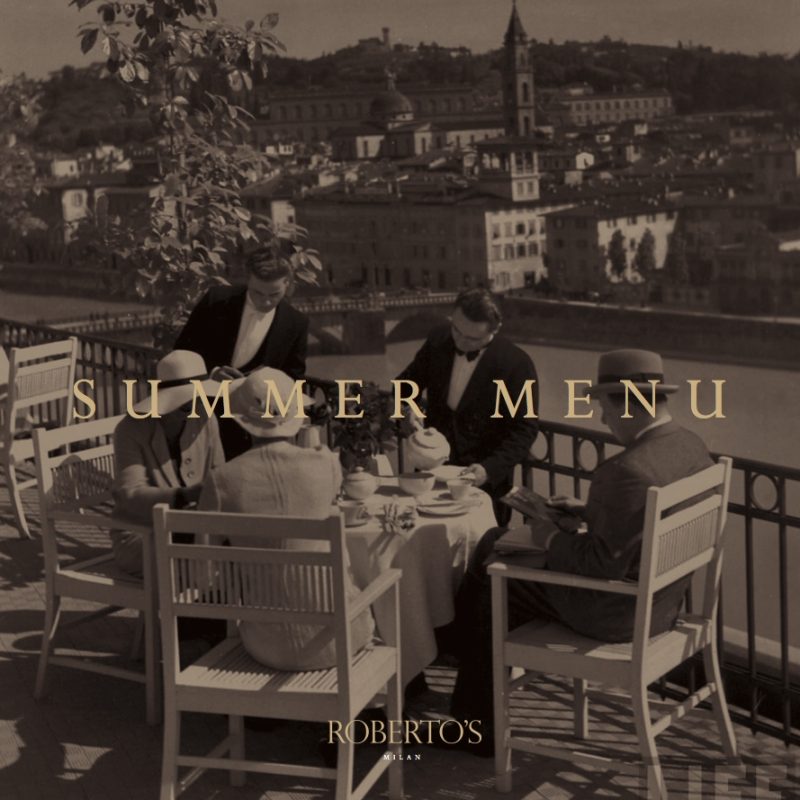

Print
Brand Development
Mission & Promise
Mission & Promise
Mission & Promise
Brand Development
BRAND MISSION
Roberto’s wants to be top of mind as THE place to enjoy an Italian meal in any particular market environment. Food, drink, service and ambiance embody what customers seek for when dining upscale Italian, in short, when they are looking for “La Dolce Vita”.
BRAND PROMISE
To be part of Roberto’s World and to enjoy a very credible Italian dining experience; the Pura Cucina Italiana.
BRAND PERSONALITY
Roberto himself – a trusted and passionate Italian who will take care of you and your guests.
DESIGN
The graphic design angle of Roberto’s is a continuation of the design inspiration of the fifties. Old black and white photography depicting the Italian lifestyle is the basis of the visual identity. This gives the concept some solidness and apparent history. These vintage photographs are combined with fashionable gold and white colors, as well as a modern classic letter type. The resulting house style is credible and upscale at the same time. The house style is dynamic and by combining the above mentioned elements, a very diverse and varied brand narrative will develop. It is also personal as the name and personage of Roberto will play an important role in the story that will be told. All communications will be recognizable as Roberto’s, but are quite diverse so that the brand image
Operating Procedures
Operations
Operations
Operating Procedures
Welcoming Guests
GOAL
The first 30 seconds of entering a restaurant can be quite crucial to the whole dining experience. The difference of being ignored or welcomed not only makes a world of difference, it takes very little time and effort to do it well. Therefore everything needs to be done to make this stage of the dining experience a successful one.
PROCEDURE
- Guests are acknowledged as soon as they approach the restaurant. Anticipate their approach and open the door for them as a first gesture of welcome.
- The welcome is always supported with an open smile and salutation of the day in Italian: “Buon Pomeriggio / Buona sera, welcome to Roberto’s Restaurant.” Call the guest by name if this is known to you. All staff members in the facility of the welcoming area may volunteer and add to the welcome ritual by also saying the salutation. When busy or when engaged with other guests always make eye contact with waiting guests with a nod or a sign, so that they feel noticed. When the hostess is busy, it is the responsibility of all to be alert for new guests and to assist with the welcoming.
- Do not ask guests for their reservations right away, but make them first feel welcome with a warm greeting. After that, inquire if reservations have been made and consult the dining reservation system. If no reservation has been made, note the guests name in the system.
- Special care needs to be taken with single diners. Avoid the question about dining alone; someone who shows up alone without a reservation is likely to dine alone. A seat on the banquette or the communal table are the right options to offer.
- Check coats and hand over the claim ticket.
Seating Guests
GOAL
Guests are sensitive to where they sit in the dining room. Some like it crowded and others will never sit in the centre. Often requests are made at the time of reservation and these requests should be honored whenever possible. A good system will accommodate as many requests as possible and avoid unnecessary mistakes.
PROCEDURE
- The availability of the tables must always be clear and up to date so that no mistakes are made with the seating of the guests. An electronic table plan, connected to the reservation system is the best way to ensure a real time overview.
- Knowing the reason for the restaurant visit, service staff can actively meet the needs of the guests and exceed expectations. Celebrations must not only be known at the reception desk but be part of the up to date knowledge in the station of the respective service staff.
- Seating allocation is done in such a manner that the workload is evenly divided over the service staff.
- When possible, offer guests a choice of their preferred seating. For example offer seating on the couch, near the fireplace or perhaps booth seating.
- Guests should never be led to a table that is not ready for service.
- When taking guests to their table stay close to them and when appropriate exchange general information about the restaurant.
- Ensure that up to date information from guests is passed on to the service staff in the respective station; for example the name of a guest without prior reservation.
- Assist guests with seating - priority for elderly persons and women. Ensure that they are comfortable and wish them a pleasant lunch or dinner.
- When appropriate try to find out how much time guests have for their meal (business lunch time pressure).
- Present the drinks menu and either ask for drink order right away, or inform the guest that someone will be with them shortly to take the drink orders.
Menu + Selling
GOAL
The menu is a key sales tool of the restaurant. The staff will have an impact on what guests decide to order. The knowledge of the menu, the tastes and the best combinations will have a definite impact on guests and also on the amount they will be spending. Selling really is giving service.
PROCEDURE
- After drinks have been served, guests are presented with the menu. When approaching, always be sensitive to the situation at the table. If guests are in conversation do not interrupt, but wait until they notice you.
- A good way to establish contact is to ask if guests have been to Roberto’s before. If this is not the case, it is the perfect opportunity to introduce the concept and the menu.
- If guests are ready to study the menu, present it opened, but if they seem to be engaged with other things, place the menu closed on the table and offer assistance whenever they are ready for it. Always give the menu to elderly guests and women first and the host last.
- Menu recommendations as to current specials or favorite items is a good way to encourage and guide guests, but should be limited to three items in order to avoid information-overload.
Order Taking
GOAL
A good deal of mistakes which lead to a disappointing experience are made in the ordering process. For a smooth flow of service, the correct recording of the orders is essential. Changes due to miscommunication can upset the dining experience of the entire table. Therefore don’t rush this process and record accurately.
PROCEDURE
- To avoid disappointment always be aware of menu items that are temporarily not available. Equally important is to know specials and soup of the day, the daily cheese selection, ice creams, etc.
- When approaching the table, again be careful about interrupting conversation and inquire if guests are ready to make their menu choices known. Never try to obtain an order when guests are in the middle of a toast.
- The moment of order taking is also really moment of selling. Thorough knowledge of the menu and the products will enable the service to advise the guests with their choices and make suggestions that enhance the meal.
- When taking the order stand opposite the guest for proper eye contact. Note down orders from elderly guests and women first, and the host last.
- Inform the guest of preparation times that are longer than what guests may logically expect.
- Check how guests prefer their meats to be cooked: rare is luke warm centre – medium rare is warm red centre – medium is warm pink centre – medium well has no pink centre.
- When all guests have ordered, repeat the order back to them.
- The very next thing after the order is taken, is to process it in the POS system. A copy of the captain order is kept in the station for easy reference of the service staff.
- After the ordering procedure guests will never have to be asked during the meal what they ordered. To ensure this is done properly a common rule has to be agreed concerning the ordering sequence at the table. This may vary from restaurant to restaurant but the most logical rule is to identify number one on the captain order, as the persons who is seated closest to the kitchen, followed by the other guests turning clockwise.
- After the food order has been recorded take the wine order, either by bottle or by glass. This requires knowledge of the wines themselves and the way they combine best with the food. It is imperative that the service staff possess this knowledge, as Roberto’s is not a restaurant where every order will be taken by a sommelier.
- Mineral water sales is preferable, but we are generous and obliging if tap water is requested.
Serving
GOAL
The organization of the service dictates the pace of the meal. Timely ordering and calling for next courses, timely service of wines before food, timely re-setting of new cutlery all require much concentration and experience. Good procedures help the team to be as efficient as possible.
PROCEDURE
- Food at Roberto’s is transported from the kitchen to the tables on large oval trays. Tray stands are divided around the room and placed next to tables when food is about to be served. The transporting of food is done by food runners, allowing the service staff to remain inside the restaurant to offer maximum service and advice to the guests.
- At the food pass, all plates, cutlery and condiments are organized on the service side so that the orders are complete when leaving the kitchen.
- All food is served at the same time and this means that waiters are teaming up for tables of four or more.
- Elderly guests, women and children are served first and the host last.
- Plated food is always served from the right hand side unless guests are obviously involved on that side in conversation. Care should be taken with how the plate is held: the thumb is placed more on the side of the dish and certainly not evidently on top of the plate rim.
- When placing the food in front of the guests make a short announcement of the dish which could be as short as “Your Pasta Primavera, Madam.” When all food is served, the responsible waiter may wish the table an enjoyable meal but this should only be done once and be avoided with the service of each course.
- Complete the service by offering freshly grated Parmesan cheese, ground pepper or special olive oil when relevant
- New cutlery is served after every course and always carried on transport plates. When placing cutlery on the table do not cross in front of the guests. Please note that pasta in Roberto’s is only served with a fork on the right hand side and spoons are on request.
- The placing of cutlery is done after the next course has been ‘announced’ via the POS, and acts as a sign to all that the order is on the way. With these rules, the manager can more easily read the dining room. Always arrange the exact cutlery in the right order on the transport plate so that service at the table is done as fast as possible and guests are disturbed as little as possible.
- Always ensure that wines are served before the food arrives (please see separate standards on wine service).
- Roberto’s operates on the following service time standards: drinks within five minutes from ordering – appetizers 10 minutes after ordering – main courses 15 minutes from clearing appetizer – desserts 10 minutes.
Clearing
GOAL
Efficient clearing keeps disruption for guests at a minimum and looks professional.
PROCEDURE
- The table is only cleared when all guests have finished their course. If unsure about this fact, approach the table carefully and inquire if all guests have finished with their course and if you may clear.
- Even though we are concerned with the satisfaction of the food that has just been consumed, we refrain from asking “was everything all right”? Asking this closed question hardly solicits the right answer. A simple smile and gesture ensures that the service is genuine and will avoid the monotonous and predictable question. However, when a considerable part of the food is still on the plate, it is very appropriate to ask this question.
- Clearing plates from the table is done from the right hand side, carrying one plate in the hand and one plate on the arm (not two on the hand). When clearing plates never turn your back towards the table or hold the soiled plates too close to the guests.
- First clear all chinaware and bring to the service station or directly to the dishwashing area when close by.
- Glasses are always cleared on a tray afterwards and held at the bottom part of the glass, not the top.
- The bread plate is cleared with the main course, as Italians enjoy their bread throughout the meal.
- Before dessert service ensure that the table is crumbed and free of salt and pepper, oil and butter.
- Immediately after clearing a course, the POS system is activated to call for the next course.
Goodbye Ritual
GOAL
When guests ask for the bill, they are really ready to go. As this is the closing part of the dining experience, this should be done swiftly and without mistakes. The last impression is as important as the first.
PROCEDURE
- Guest bills are always requested, never presented unrequested. If the service delivery until this point is satisfactory so should the bill presentation be and should not take more then a few minutes from the time requested.
- Before presenting the bill, check if all items have been recorded correctly, both in the interest of the guest, as well as the restaurant.
- When presenting the bill thank the guest for the first time and inquire if they have checked coats at reception.
- If valet parking is provided, signal the attendant to retrieve the car.
- When guests sign the bill to their room always ensure that name, room number and signature are properly recorded on the bill.
- Accompany guests to the door and thank the guests by name them for their visit and express the wish to see them again soon.
Wine Service
PROCEDURE
- Wines are stored inside Roberto’s in climatized wine cabinets for white and red wines. Whites are stored at three temperature zones of 8, 10 and 12 degrees; reds are kept at 18 degrees. Guests are invited to select their own bottle if they wish to do so.
- The wine selection reflects all 35 DOCG wine regions of Italy and has a small section of other global wines.
- The open wine selection has a minimum of six white and six red wines and is offered in various measures from tasting size, to half glass and full glass.
- Wine bottles are presented and approved by the guest at the table before opened. Present the wine to the guest who ordered.
- Not many Italian wines need decanting nowadays as most wines are sold before deposit can build up in the bottle. However, some wines can appear rather closed after opening, and would benefit from receiving the extra oxygen through pouring the wines into a decanter.
- After the wine is presented to the host, it may be opened at the table or on the side station. Do not turn your back to the guests when standing close to the table.
- The capsule around the cork of the bottle needs to be removed by cutting around the bottle just under the bottleneck. This is done without turning the bottle.
- Clean the top of the cork/bottle with the napkin if necessary and open by applying a two leveraged wine opener.
- Serve a tasting quantity for the person who ordered while showing the bottle again close to the guest.
- Serve other guests first and top up the glass of the guest who ordered last.
- Fill the glasses at the table maximum half way, leaving enough space for the guest to air the wine. This all depends on the size of the glass, but in general it is 1/2 of a white glass and 1/3 of a red wine glass.
- Each bottle of wine is tasted in a new glass, also if a second bottle of the same wine is ordered.
- The more complex and aromatic white wines, as well as the fruity red wines can be served in the glacette (thermo cooler). This way of keeping wines from warming up is convenient to serve and pour. Sweet, sparkling and all other white wines are best served in a wine cooler filled with 50% water and 50% ice cubes.
- Red wines are kept on the table on a metal coaster after opening and white wines are placed in a bucket with ice water next to the table. There is no need to keep the bottles at the service station, too far removed from the guests.
- Special wines deserve special glasses and common to what is practiced in Italy, large oversized glasses are brought to the table when very good wines are ordered.
Drink Service
COLD DRINKS
- Drinks are dispensed from the service bar inside the restaurant. Always use pristine glasses with the appropriate amount of ice cubes (fill glass halfway) and fresh garnishes.
- Mineral water and juices are not served with ice cubes, unless requested.
- Drinks are presented at the table on round trays, tray size should be appropriate to the number of drinks.
- Drinks are always handled at the lower part of the glass or on the stem for stemmed glasses, both when serving, as well as when clearing glasses.
- Bottled waters and soft drinks are poured for the guests. Glasses are filled half way.
- Water and red wine bottles are placed on the table on a metal coaster.
- Full range of Italian aperitivo’s should be available in the restaurant amongst which Martini dry, white and red; Punt e Mes; Rosso Antico, Campari, Aperol.
TEA SERVICE
- Tea is served either in high quality linen tea bags, or as loose teas. Supplier may be a local company or as designated by HWW.
- Loose tea preparation follows these steps: pre-heat the teapot – add one teaspoon of loose tea per person – pour water off the boil – steep the tea for 3 to 5 minutes – remove the leaves – stir tea – serve to table.
COFFEE SERVICE
All coffees are served with “Chiacchiere”, the Italian signature cookie of Roberto’s. This light crispy pastry is made in house and adds to the authenticity of Roberto’s.
- Coffee at Roberto’s is made by a “Van der Westen” coffee machine that is at the service bar and produces high quality coffee in combinations with Illy or other good quality brand.
- The service bar is manned by a qualified barista to produce top quality coffees and latte art coffees.
- Ristretto – espresso cup filled only with thick layer of crema.
- Espresso – espresso cup half filled only with thick layer of crema.
- Cappuccino – one espresso measure with milk ‘crema’. This ‘crema’ is not hot milk and foam, but a smooth mix of these 2.
- Latte macchiato – the milk and foam are poured in a tall glass and the espresso is poured into the glass in front of the guest creating a distinctive layer of coffee between the foam and the milk.
- Espresso macchiato – espresso cup half filled with little milk ‘crema’ added on the top.
Sequence of Service
Operations
Sequence of Service
Welcoming Guests
Make eye contact and smile. Open the door on time so the guest does not have to wait.
Say “Buon Pomeriggio / Buona sera, welcome to Roberto’s restaurant.” Call the guest by name if this is known to you. Take the guests coat. “May I take your coats?” Please ensure you give the correct claim ticket.
Do not ask the guests for their reservation, but firstly make them feel welcome with a warm greeting. Then check the reservation. “Under what name did we have a table prepared for you?” “Or for how many persons can we prepare a table?” If no name is known, ask the guest politely his/her name and make a note on the reservation list.
Ask if guests wish to have a drink in the Lounge first, or if they prefer to go straight to the table.
Say “We have a nice table for you, would you like to sit next to the fireplace or on the couch?”
When accompanying the guest to the table, take the menus with you at the same time (make sure they are spotless). First ask for the drink order and after that, place the menus gently on the corner of the table.
“Would you like to start with a glass of Prosecco?” There is no need to present an open folded menu, forcing the guest to look at the menu right away. Italian aperitivo’s and Bollicine (sparkling wines) are suggested in a soft-sell way. When appropriate, try to find out how much time guests have (business lunch time pressure).
Serve drink order and ask if guests have been to the restaurant before. If not, this is the prefect time to briefly explain the concept and the menu. When serving (or clearing) drinks, always hold the glass at the bottom 1/3 of the glass, keeping the top part clean.
“Here is your Prosecco, enjoy.” Ensure this is done as soon as possible. “Here is some freshly baked pizza bianco to accompany your meal.” Make sure there is at least one bread per person. 5 minutes – remove the leaves – stir tea – serve to table.
Seating Guests
Take the food order.
“May I recommend the (dish) or would you like to have a nice salad on the side?” Take the wine order. “Have you made a choice or would you like a suggestion?”
Always try to promote the Italian selection of Formaggi and Prosciutto. Record order in POS and double check.
Place cutlery, glasses and serve wine. When serving a bottle let the guest pre-taste and explain the wine. Red wine bottle to remain on the table, as well as white wine when served in glacette (thermo cooler), or white wine may be served in a wine cooler on a stand next to the table.
Cutlery is placed right after the order has been given and/or after a course has been cleared away.
Always use a plate to transport the cutlery. Pasta only needs a fork on the right hand side.
Ask if guest would like to order water.
Serve the signature Focaccia.
Appetizer Service
Arrive to the table and place the tray stand near the table.
Serve plate from the right side of the guest and of course ladies are served first. Do not place the thumb on the top rim of the plate, but as much on the edge/rim of the plate as possible.
Be well informed of what each guest has ordered and do not auction off plates at the table.
Do a satisfaction-check after three minutes and refill wine, bread. “What else can I do for you?”
Remove appetizer plate also from the right side of the guest, unless this bothers the guest in his position or conversation with other guests. Do not remove the pepper, salt, bread and oil until after the main course has been cleared away.
Do not ask if “everything was all right”. A simple smile and gesture is sufficient to show that the service is genuine and will avoid the monotonous phrase heard too often.
Call the next course and place new cutlery in accordance with the next course.
Pour remaining wine or open and serve new bottle for main course.
Main Course
Arrive to the table and place the tray stand near the table.
Serve main course from the right side of the guest and of course ladies are served first.
Be well informed of what each guest has ordered and do not auction off plates at the table.
After a few minutes check if guest needs any further assistance. Avoid asking if “everything is all right” as guest will likely respond affirmative to this question, even though this may not be the case. An open question will lead to better communication with the guest: “What else can I do for you?”
Pour wine and ask if additional water is required.
Remove main course plate, as well as bread, olive oil and the pepper and salt mills.
Clear table of crumbs with napkin and small plate.
Bring the dessert menus and ask guests if they would like a dessert.
Serve the complimentary Granité of the season (only half of a small glass as it is not a dessert replacement).
Dessert
Take the order. If the guest does not want a dessert, ask: “May we serve you a nice Italian espresso or perhaps a glass of our signature Grappa on the side?”
Recommend sweet wine after order has been placed: “Would you like to have a glass of dessert wine?” In case guests still have wine left, ask if they want to drink this first before dessert is served.
Place new cutlery - small fork and spoon with desserts and small knife and fork with cheese.
Serve wine in the glass at the table.
Serve dessert
Serve wine in the glass at the table.
Serve dessert from the right side of the guest. Be well informed of what each guest has ordered and do not auction off plates at the table.
Remove dessert plate.
When clearing the dessert, ask for espresso, coffee, tea, after-dinner drinks.
Serve a spoonful of nougat from the large nougat block that is wheeled to the table.
In case there is room in the Lounge ask guests if they care to be seated there. Try to motivate guests to do this when busy, to free up space in the restaurant.
Ask for second espresso and/or after-dinner drinks.
The Bill
Present bill on request and always have hotel guest sign their bill.
Record payment in POS and return to guests as soon as possible. Always thank them for their visit at that moment: “Thank you for having dinner in Roberto’s Restaurant, have a nice evening and we hope to see you soon!”
"Did you have a coat with you?”
Keep eye contact.
Say good-bye and walk guests to the door. Thank guests by name for their visit and wish them a good night.

